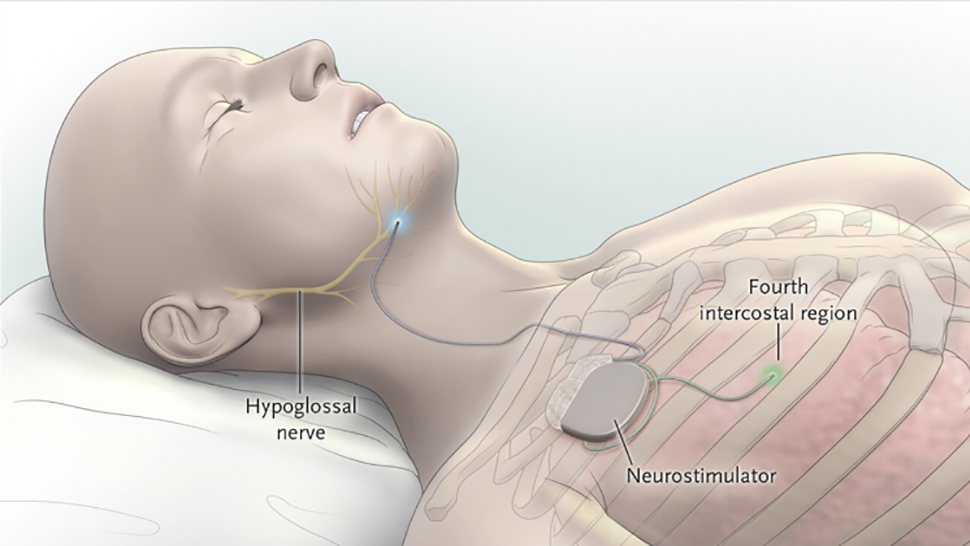Implant to prevent apnea

A new device has been developed that reduces the symptoms of obstructive sleep apnea by 70%. Implant action is based on nerve stimulation, located at the base of the tongue and controlling the respiratory neck. This is one of a number of technologies designed to prevent respiratory arrest in a dream. To combat sleep apnea, there is already a very effective solution, CPAP (Continuous Positive Airway Pressure), artificial ventilation of the lungs due to excessive pressure. However, studies suggest that between 30% and 50% of patients cannot or do not want to use CPAP equipment. Many explain this by the fact that the respiratory mask on the face causes discomfort during sleep. Sleep apnea, characterized by loud snoring and daytime sleepiness, is fraught with serious health problems, including an increased risk of heart attack, diabetes, and apoplexy.

')
The new implant is designed for those patients who for some reason cannot use CPAP to combat apnea. However, this implant does not help in cases where the patient has severe obesity (body mass index is 32 or more) or has problems with a soft palate.
The device is placed under the skin on the patient's chest. One wire stretch along the neck and twist around them hypoglossal nerve located at the base of the tongue. Another wire stretches to the middle of the chest, where they introduce a breath sensor. Before going to sleep, the patient remotely turns on the device, and turns it off before lifting.
Testing was conducted on 126 patients who suffer from moderate to severe apnea. All subjects tried the CPAP technology, but for a number of reasons they could not use it. The implants were implanted to the patients and observations were made within 12 months. It was found that the number of stops breathing during sleep, partial or full, decreased by 68%: from 29.3 to 9 times per hour. The number of times when the level of blood oxygen saturation decreased significantly, decreased by 70%: from 25.4 to 7 times per hour. Two patients had to repeat implantation due to pain in the area of the implanted device.
Side effects are pain in the muscles, temporary weakening of the muscles of the tongue and the appearance of abrasions on its surface.
According to statistics from the National Sleep Foundation (National Sleep Foundation) and research by non-profit organizations, about 18 million Americans suffer from sleep apnea of varying severity levels.
Source: https://habr.com/ru/post/210602/
All Articles